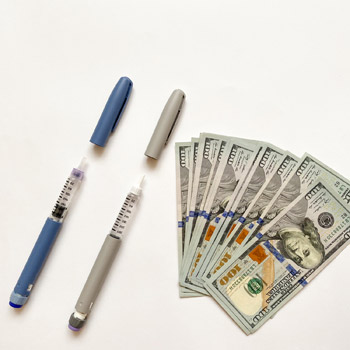Basal insulin for beginners
It can be tough to start and titrate basal insulin in a patient with type 2 diabetes because of the many options available, but a key number can measure the difference between a patient's bedtime and morning blood glucose values to ease the way.
What I wanted to talk about, which comes up with every internist and primary care physician, is how to start and titrate basal insulin in a patient with type 2 diabetes. We see mistakes, and we see a lot of mistakes. We haven't gotten the message on how to use insulin very well.
The first thing to consider is which of the basal insulins to use, and there are a variety of different ones. They all have their pros and cons. Neutral protamine Hagedorn (NPH) is still the cheapest. There's nothing wrong with using NPH insulin; I still use it. But the insulin analogs are a bit cheaper. There are three formulations of U100 insulin glargine. Insulin detemir is the other analog from that era. More recently, we have insulin degludec and U300 glargine. I like to use those insulins, especially in basal bolus regimens, simply because the evidence shows less hypoglycemia.
When starting insulin for the first time, for most of these patients who have very high A1c levels, the key is just getting the insulin started. We generally start in the evening. And when glargine came out in 2001, we were all told, “Fix the fasting [glucose] first.” What we did, and what many people still do, is they simply have the patient check their blood sugar in the morning, and the basal insulin dose at bedtime, and titrate up until that glucose level comes down into the acceptable or normal range, typically under 120 mg/dL.
“Fix the fasting first.” Unfortunately, we learned very quickly that it's more complicated than that. This initially become problematic when patients came in NPO for procedures such as a colonoscopy, and their blood sugars would crash. People get too much basal insulin because they are not taking into account the bedtime blood glucose. If the bedtime blood glucose is 150 mg/dL, and the patient wakes up at 140 mg/dL on average, that means the basal insulin is working just fine.
But more often what happens, especially with these high hemoglobin A1c patients, is that the bedtime blood sugar is 250 mg/dL or 280 mg/dL or 300 mg/dL. And the insulin dose is titrated up and up and up so that the glucose level now comes down to 110 mg/dL and you have this tremendous drop in the glucose, because what that insulin dose is actually treating is the postprandial glucose from dinner. And what I see in my clinic, day after day, are patients coming in on too much basal insulin, because they don't know that they're going to bed with a very high blood sugar. What they really needed was a little bit or maybe a lot of insulin at dinner.
We have a way to gauge what is an effective difference between the bedtime glucose and the morning glucose. You can do this with fingersticks; you can do this with continuous glucose monitoring. But the key number here is called the BeAM score, or the difference between a patient's bedtime and morning blood glucose values. You don't want that difference [between] high blood sugar at bedtime and the lower blood sugar at fasting in the morning to be more than 60 mg/dL. Typically what happens when patients are starting basal insulin for the first time is they come in, they see someone like me, and that BeAM score is over 100 because they're going to bed with glucose levels so high, because they're not checking that bedtime glucose.
The BeAM score was introduced in a few papers that came out five to 10 years ago, and it didn't receive very much attention. But I've been paying attention to this for every patient, every day. Most of my patients are on continuous glucose monitoring. But to use the BeAM score, it doesn't matter how they check their glucose.
Since the BeAM score was introduced, there have been other advances, the big one being the introduction of the glucagon-like peptide-1 (GLP-1) receptor agonists. Many of these patients who need mealtime insulin or who needed it in the past, if they're not on a GLP-1, they can be put on one of the GLP-1 receptor agonists to bring that bedtime blood glucose level down and bring that BeAM score under 60. In type 1 diabetes, we would prefer that BeAM score to be under 30.
The biggest problem is you don't want to overdose that basal insulin, whether it's glargine, detemir, or degludec. If you look at that difference, even with just fingerstick glucose testing, you can do the patient a huge favor in terms of morning hypoglycemia, if they miss their breakfast, and more important, bringing down their overall glucose level so that their A1c levels do have a chance to get within target, under 7%.





